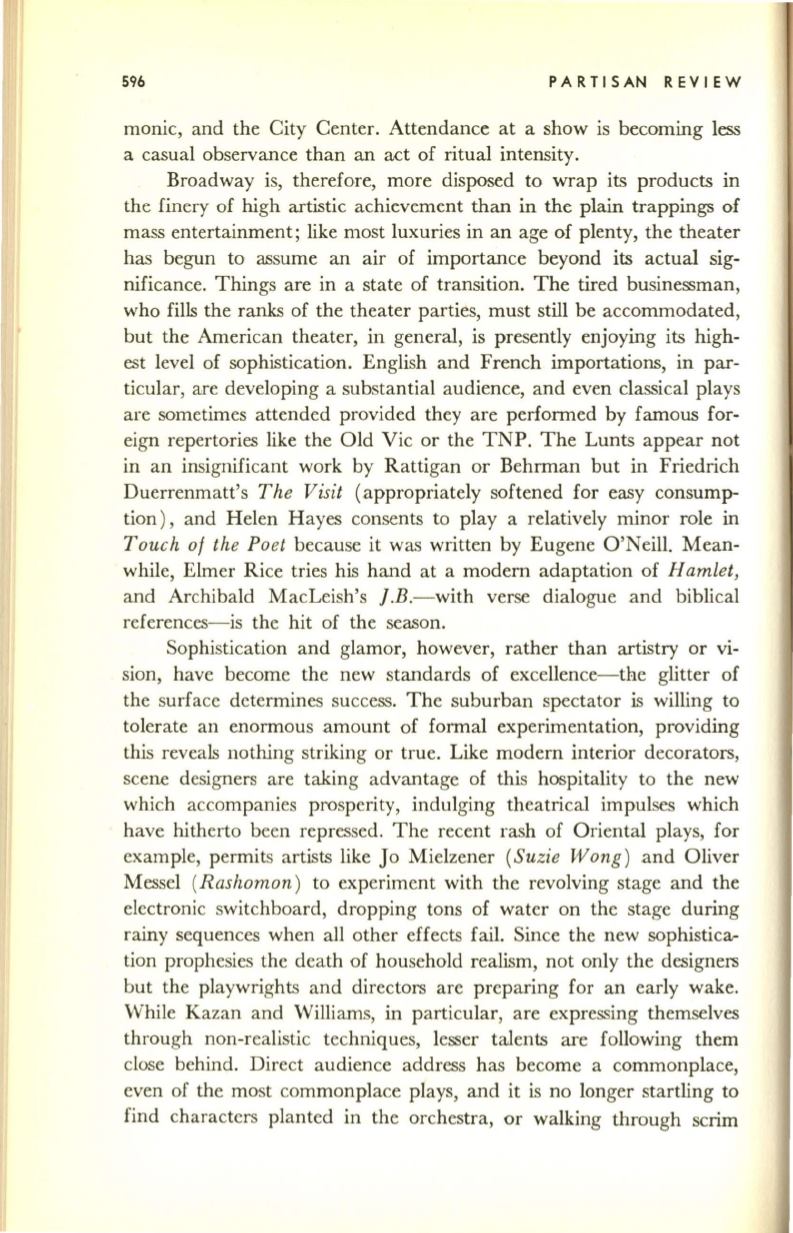
596
PAR TIS AN REV lEW
monic,
and the
City
Center. Attendance at a show is becoming less
a casual observance than an act of ritual intensity.
Broadway is, therefore, more disposed to wrap its products in
the finery of high artistic achievement than in the plain trappings of
mass entertainment; like most luxuries in an age of plenty, the theater
has begun to assume an air of importance beyond its actual sig–
nificance. Things are in a state of transition. The tired businessman,
who fills the ranks of the theater parties, must still be accommodated,
but the American theater, in general, is presently enjoying its high–
est level of sophistication. English and French importations, in par–
ticular, are developing a substantial audience, and even classical plays
are sometimes attended provided they are performed by famous for–
eign repertories like the Old Vic or the TNP. The Lunts appear not
in an insignificant work by Rattigan or Behrman but in Friedrich
Duerrenmatt's
The Visit
(appropriately softened for easy consump–
tion), and Helen Hayes consents to play a relatively minor role in
Touch of the Poet
because it was written by Eugene O'Neill. Mean–
while, Elmer Rice tries his hand at a modern adaptation of
H amiet,
and Archibald MacLeish's
I.B.-with
verse dialogue and biblical
references- is the hit of the season.
Sophistication and glamor, however, rather than artistry or vi–
sion, have become the new standards of excellence-the glitter of
the surface determines success. The suburban spectator is willing to
tolerate an enormous amount of formal experimentation, providing
this reveals nothing striking or true. Like modern interior decorators,
scene designers are taking advantage of this hospitality to the new
which accompanies prosperity, indulging theatrical impulses which
have hitherto been repressed. The recent rash of Oriental plays, for
example, permits artists like Jo Mielzener
(Suzie Wong)
and Oliver
Messel
(Rashomon)
to experiment with the revolving stage and the
electronic switchboard, dropping tons of water on the stage during
rainy sequences when all other effects fail. Since the new sophistica–
tion prophesies the death of household realism, not only the designers
but the playwrights and directors are preparing for an early wake.
While Kazan and Williams, in particular, are expressing themselves
through non-realistic techniques, lesser talents are following them
close behind. Direct audience address has become a commonplace,
even of the most commonplace plays, and it is no longer startling to
find characters planted in the orchestra, or walking through scrim


